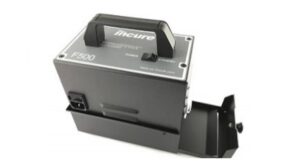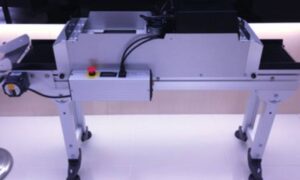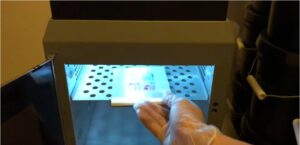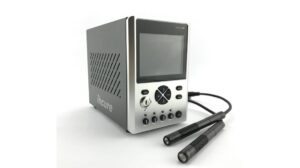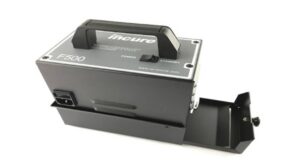UV cured adhesives are known for their strength, durability, and rapid curing capabilities. They are widely used in various industries, including electronics, automotive, medical devices, and manufacturing. However, there are times when UV cured parts might fall apart or fail to perform as expected. Understanding the common issues that lead to adhesive failure and knowing how to address them can help ensure the reliability and longevity of your bonded components. In this blog, we’ll explore the reasons why UV cured parts might fall apart and provide solutions to prevent these issues.
Common Reasons for UV Cured Parts Falling Apart
1. Incomplete Curing
Issue:
Incomplete curing occurs when the UV adhesive does not fully harden. This can result from insufficient UV light exposure or incorrect UV light wavelength.
Solution:
- Ensure Proper UV Light Exposure: Follow the manufacturer’s guidelines for UV light intensity and curing time. Ensure that the adhesive is exposed to the UV light for the full recommended duration.
- Check UV Light Equipment: Use UV light sources that are compatible with your adhesive and in good working condition. Regularly calibrate and maintain your UV curing equipment.
2. Inadequate Surface Preparation
Issue:
Poor surface preparation can prevent the adhesive from forming a strong bond. Contaminants like dust, grease, or moisture can interfere with adhesion.
Solution:
- Clean Surfaces Thoroughly: Ensure that all surfaces to be bonded are clean, dry, and free from contaminants. Use appropriate cleaning agents and methods based on the material.
- Surface Treatment: For certain materials, applying a primer or surface treatment can enhance adhesion. Consult the adhesive manufacturer’s recommendations for specific surface preparation steps.
3. Mismatch of Adhesive and Substrate
Issue:
Using the wrong type of UV adhesive for the specific substrate can lead to poor bonding and eventual failure.
Solution:
- Select the Right Adhesive: Choose a UV adhesive that is compatible with the materials you are bonding. Verify that the adhesive is designed for the specific substrates involved in your application.
- Consult Technical Data Sheets: Refer to the adhesive’s technical data sheets for compatibility information and recommended applications.
4. Environmental Factors
Issue:
Environmental conditions such as temperature fluctuations, humidity, and exposure to chemicals can affect the performance of UV cured adhesives.
Solution:
- Control Environmental Conditions: Maintain stable temperature and humidity levels in the workspace to avoid adverse effects on the adhesive. Avoid exposing the bonded parts to harsh chemicals or extreme conditions unless the adhesive is specifically designed to withstand them.
- Use Environmentally Resistant Adhesives: For applications exposed to harsh conditions, select UV adhesives formulated for increased environmental resistance.
5. Overexposure to UV Light
Issue:
While UV curing is essential, overexposure to UV light can sometimes lead to issues such as brittleness or degradation of the adhesive.
Solution:
- Follow Manufacturer’s Guidelines: Adhere to the recommended curing time and UV light intensity. Avoid excessive exposure beyond the recommended parameters.
- Conduct Testing: Perform small-scale tests to determine the optimal curing time for your specific application.
6. Improper Mixing or Application
Issue:
For UV adhesives that require mixing or specific application techniques, improper handling can lead to inadequate bonding or failure.
Solution:
- Mix Properly: If the adhesive requires mixing, ensure it is done according to the manufacturer’s instructions. Use clean tools and containers to avoid contamination.
- Apply Evenly: Apply the adhesive evenly and in the recommended thickness to achieve a strong bond. Avoid applying excessive amounts that could lead to curing issues.
Tips for Preventing Adhesive Failure
- Conduct Thorough Testing: Before full-scale application, test the adhesive on a small sample to verify compatibility and performance.
- Regular Maintenance: Regularly maintain and calibrate UV curing equipment to ensure optimal performance.
- Consult Experts: If you encounter persistent issues, seek advice from adhesive experts or manufacturers for guidance and troubleshooting.
- Document Procedures: Keep detailed records of adhesive application procedures, environmental conditions, and curing times for reference and quality control.
Conclusion
UV cured adhesives offer exceptional bonding strength and rapid curing, but issues like incomplete curing, inadequate surface preparation, and environmental factors can lead to parts falling apart. By understanding these common problems and implementing the solutions outlined above, you can improve the reliability and durability of your UV cured assemblies. If you need further assistance or have specific questions about UV adhesive applications, feel free to contact us. Our experts are here to help you achieve the best results for your projects.
